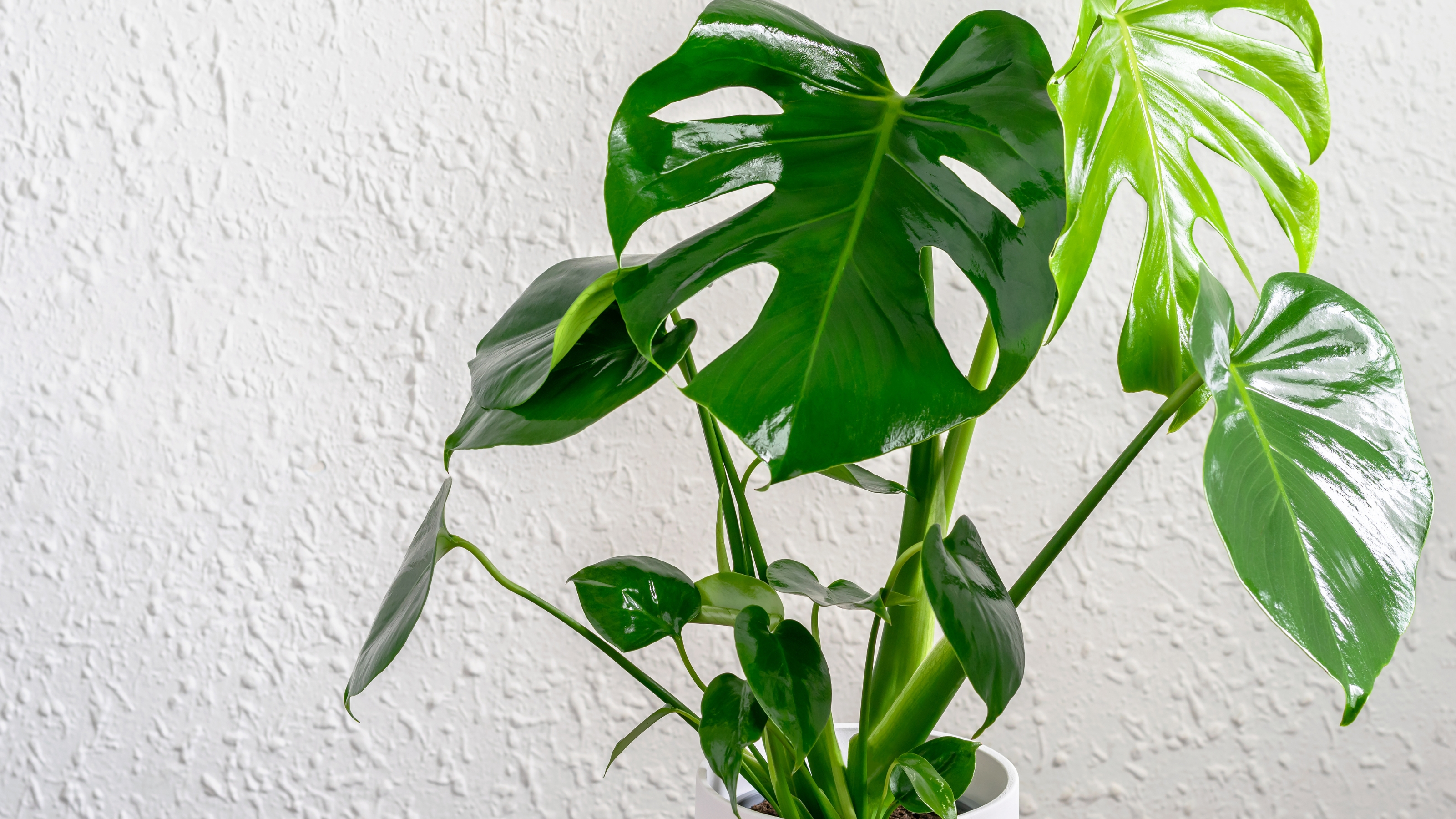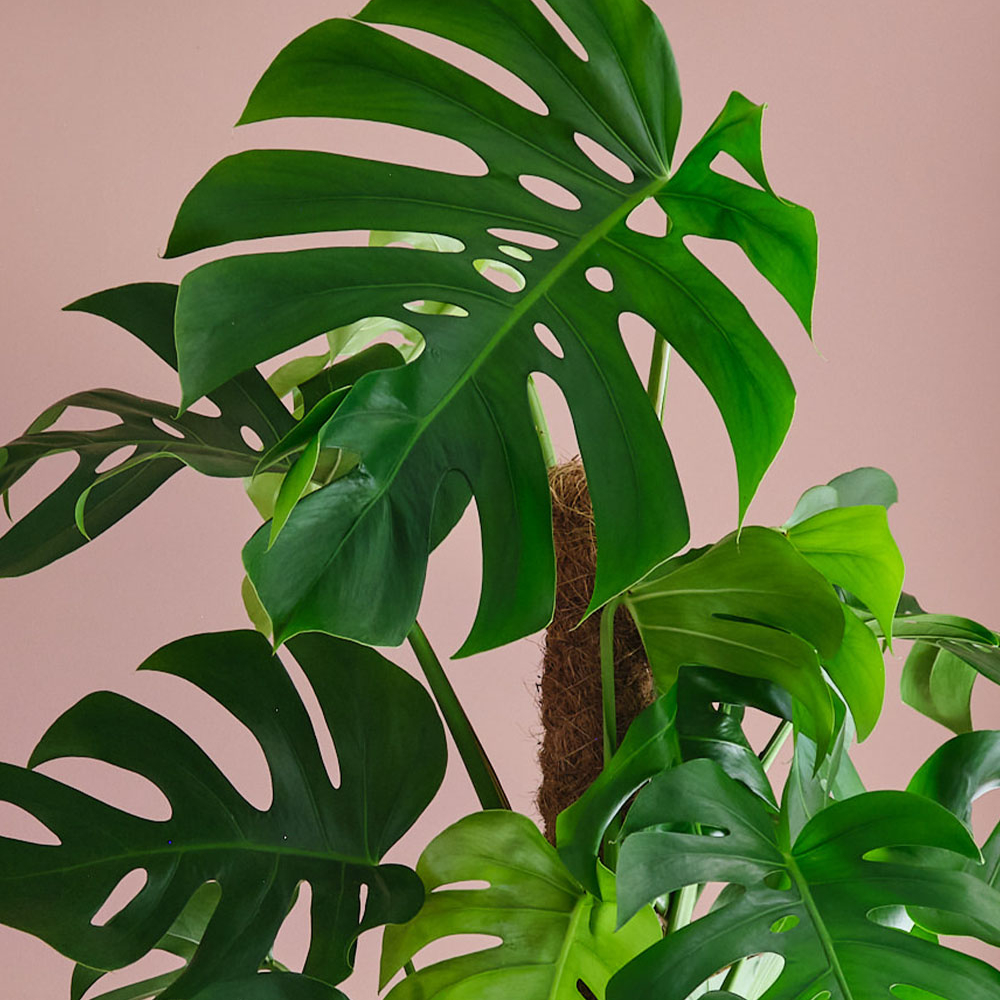How to care for a monstera plant indoors – 9 tips to help it thrive in your home
The experts reveal everything you need to know


Monsteras are one of our favorite indoor plants but if you’ve found yourself asking how to care for a monstera, we’ve got you covered with this guide.
While there are a number of different varieties, the most common is the Monstera Deliciosa, with its glossy heart shaped leaves. But you might also be familiar with the Monstera Adansonii, which is also commonly known as the swiss cheese plant. But whichever variety you personally own or are thinking about buying, thankfully it’s relatively easy to care for them once you know how.
So, we spoke to a number of houseplant experts to find out their top tips and tricks for caring for one of the best indoor plants.
HOW TO CARE FOR A MONSTERA PLANT INDOORS, ACCORDING TO THE EXPERTS
1. Choose the right pot or container
Before you even get started, it’s important to choose the right pot or container to house your monstera. And buying one with drainage holes is key to prevent waterlogging. “A terra-cotta pot is ideal because it allows excess moisture to evaporate, preventing root rot,” another issue which can afflict plants if you’re not careful, admits Jane Dobbs, expert gardener and gardening team lead at Allan's Gardeners.
The container also needs to be of a size where the plants’ roots have plenty of space to grow, so it might be better to opt for one which has room for it to grow into, instead of one that is too small.

Jane has over 10 years of experience as a gardener and now manages a team of gardening professionals. She is the first port of call for commentary and gardening advice as part of her role.
2. Use a nutrient-rich, well-draining soil
Once you’ve got your pot or container it’s time to turn your attention to the type of soil you use. “A good potting mix with good drainage is essential for Monstera plants,” says Jane. “With a mix of peat, perlite, and orchid bark, you get the right balance of moisture retention and drainage. However, you’ll want to avoid dense soils that can rot the roots.”
If you’re still not sure which one to buy, “a mix designed for aroids works well,” Jo Lambell, founder of Beards & Daisies, offers.
Get small space home decor ideas, celeb inspiration, DIY tips and more, straight to your inbox!

Not only is Jo the founder of Beards & Daisies but she has also written a book, which is aptly named The Unkillables, where she has shared her passion for houseplants.
3. Place in indirect sunlight
If you’re wondering where to position your monstera in your home, “bright, indirect light is best for monsteras,” Jane says. This is because their leaves can become scorched if they sit in direct sunlight, whereas too little light can stunt their growth.
“A spot near a north or east-facing window, where the plant receives filtered light, is ideal,” according to Jo. And you can also create filtered light, even if your window gets direct sunlight, simply by using sheer curtain panels to diffuse the light a bit.
4. Provide a warm and humid environment
As a tropical plant, the monstera thrives in warm and humid environments. But if you don’t live in a part of the country that experiences both all year round, there are a number of ways to help recreate those conditions.
If the air in your home is dry, having a humidifier in the room can certainly help. Ideally, you should be aiming for a humidity level of around 60%, the experts concur. “Placing the plant on a tray of pebbles filled with water,” can also help, Jo explains.
As for the temperature, 60°F is really the minimum that you want your room to be, as any colder can cause damage to this plant, with the experts agreeing that the sweet spot is between 65 and 85°F. In addition to this, Jane warns that “monsteras don't like drafty windows, air conditioning vents, or radiators, because sudden temperature changes can stress them.” So, be sure to consider this when you get your monstera situated in your home.
5. Keep the soil moist but don’t overwater
“Monstera plants prefer consistently moist soil but should never be waterlogged,” Jo discloses. Because of this, you’ll want to “water your Monstera when the top 1-2 inches of soil are dry. Typically, this means watering every 1-2 weeks, but this can vary based on the season and indoor climate.”
A good tip is to “keep watering until water is running out of the drainage holes at the bottom of the plant's pot,” Graham Smith MCIhort, national sales manager at LBS Horticulture, remarks. “However, the soil should not be constantly moist and needs to be left to dry out between waterings.” So, you’ll want to get that balance right.

Graham has extensive knowledge in the horticultural and gardening industries, and prides himself on using this to help gardeners of all skills create their perfect outdoor space.
6. Fertilize when growing
You only really need to worry about fertilizing your monstera plant during the growing season, so over the spring and summer months. And the experts agree that every 4-6 weeks is best during this time of year with a balanced, water-soluble or liquid fertilizer.
You can reduce feeding in the fall and winter, when the plant's growth naturally slows.
7. Prune regularly
When it comes to pruning your monstera, you only really need to do this to control its size. So, if you’ve noticed that yours is getting a bit out of control, cutting it back even once a year should more than suffice.
You can also “remove any yellowing or dead leaves,” Jo declares. Remember to use a clean, sharp pair of scissors or secateurs to cut just above a leaf node.

8. Watch out for pests
If you happen to have plants of any kind, whether that be indoors or outside, knowing how to identify houseplant pests can really come in handy. This way you can treat them before they become a bigger issue.
When it comes to monsteras, “watch out for common pests like spider mites, mealybugs, and scale,” Jo says. And thankfully they “can be managed by wiping the leaves with a damp cloth, using insecticidal soap, or applying neem oil.”
9. Repot as it grows
If you already have a monstera, you might have noticed just how quickly it can grow and because of this, they will need to be repotted every 1-2 years. “When repotting, choose a pot that is 1-2 inches larger in diameter than the current one and use a well-draining soil mix, such as one made for aroids or containing peat, pine bark, and perlite,” Jo explains. And “the best time to repot your monstera is during spring, as this is when the plant is actively growing,” Graham adds.
And if your monstera happens to reach around a meter in height, that’s when it might need some additional support to stay upright. “Consider adding a moss pole or trellis to provide something for the plant to climb, which will also encourage healthy growth,” Jo continues.
FAQs
Should I mist my monstera?
“Misting your Monstera is beneficial, especially if you live in a dry climate or if your home is heated in the winter,” Jane admits.
Regular misting actually helps to increase the amount of humidity around the plant, mimicking its natural tropical environment. “Misting every few days or when the air feels particularly dry should be sufficient,” Jo suggests. “However, be cautious not to overdo it, as excessive moisture on the leaves can lead to fungal issues. Alternatively, you can use a humidifier or place the plant on a humidity tray.”
While Jane also recommends misting in the morning “so the leaves can dry out during the day.”
